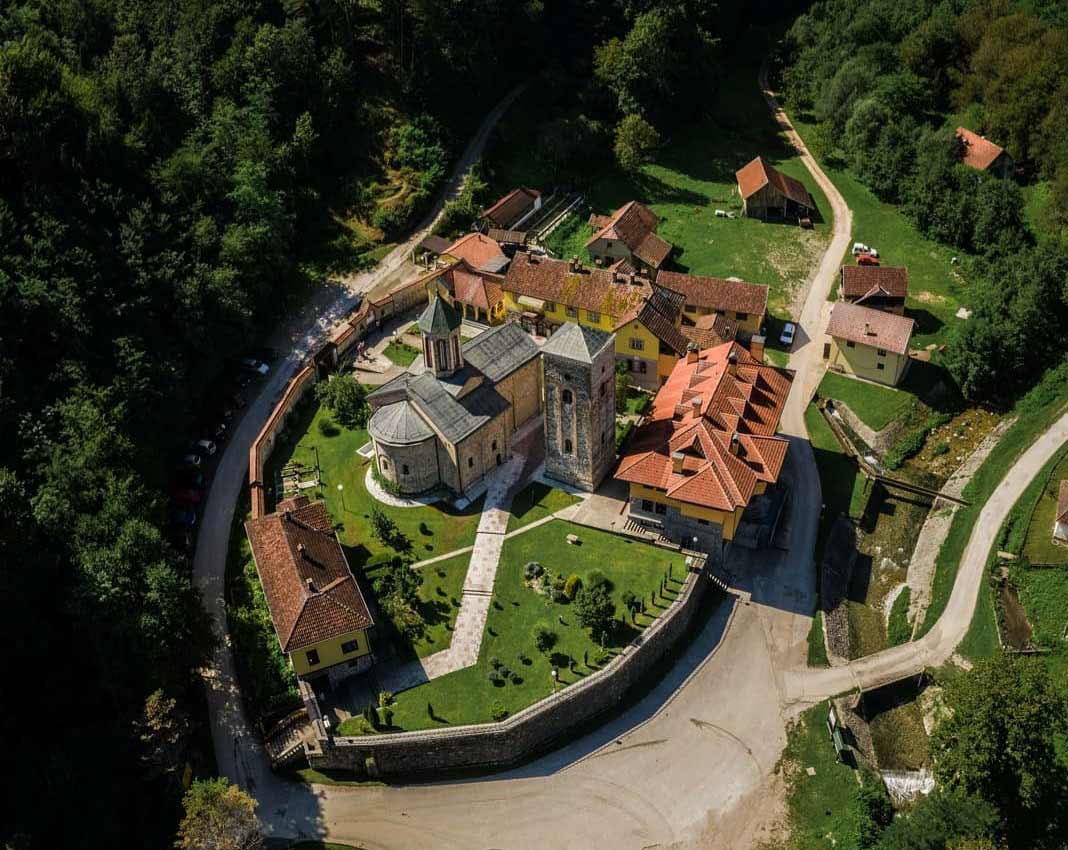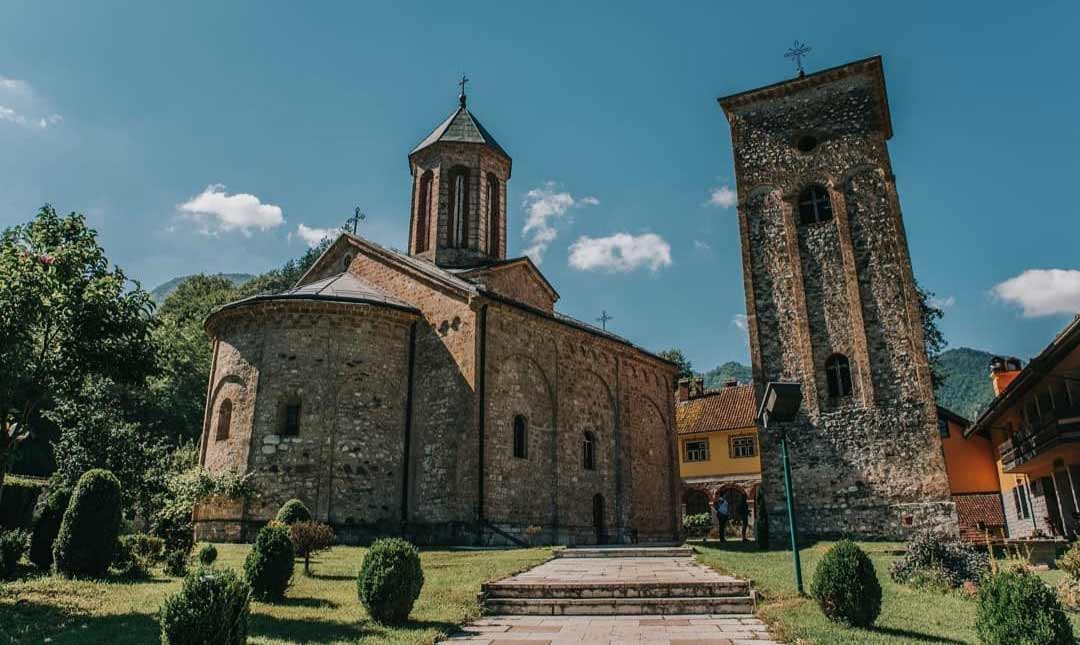Manastir Rača
Monasteries in Serbia are the unique testimonies of history, places where the spirituality, tradition, and culture of Serbia were preserved. The next stop on our journey through Serbia is hidden behind the river Raca (in Serbian: Rača), tucked away in beautiful nature. This is a story of the Raca monastery (in Serbian: Manastir Rača)
According to tradition, the Raca Monestary is the endowment of the Serbian king Dragutin. It was built in 1275, 6 km from the confluence of the Raca and Drina rivers, and only 7 km from Bajina Bašta. The Raca Monestary belongs to the Diocese of Žička of the Serbian Orthodox Church and represents an immovable cultural good and a cultural monument of great importance. In monasticism, he was called Theoctist.

Fotografija: Dragiša Stojiljković
Raca Monastery – history testimonials
The Raca Monastery was built within the former Sokolska Nahiya. During its long history, it has been demolished, rebuilt, and even rebuilt from scratch several times. With the fall of the Serbian despotism before the Ottoman rule, the first suffering of the monastery took place. Further demolition and destruction of the Raca Monastery took place immediately after the Great Migration in 1690, and after that, it was destructed again after the collapse of the First Serbian Uprising in 1813.
Raca Monastery - Prva obnova
For more than a century, in the period from 1690 to 1795, the monastery was in ruins. The first renovation of the monastery took place in 1795. The key moment for the reconstruction is the departure of the monk Milentije Stefanović from the Tronosa (Tronoša monastery) monastery ( https://en.wikipedia.org/wiki/Tronoa_Monastery ) u Svetu Zemlju Jerosalim. Arhimandrit i duhovni učitelj jermonaha Milentija Stefanovića, Stefan Jovanović obezbeđujući dovoljno sredstava svom štićeniku nalaže mu da po povratku iz Jerosalima izdejstvuje dozvolu za obnovu manastira Rače.
Nakon dobijanja preporuke od Vaseljenskog patrijarha, jermonah Milentije zajedno sa jermonasima Isaijom i Josifom 1795. godine započinje obnovu/izgradnju. Nova crkva, gotovo iz pepela podignuta je za godinu dana i već na Božić iste godine (1796.) crkva je i osveštana. Veoma bitnu ulogu u obnovi igrali su i seljaci koji su o svom trošu pomogli obnovu, dovlačeći drvnu građu i kamen.

Fotografija: Dragiša Stojiljković
Re-demolition of the Raca Monastery
The collapse of the First Serbian Uprising in 1813 brought new uncertainty and fear to the monks. Many of them fled the monastery in fear of the Turkish retaliation. Their fear turned out to be justified, and soon after the collapse of the uprising, Memshir-aga crossed the Drina with his army and surrounded the monastery. In that way, the monastery of Rača has burned again only 18 years after the renovation. In the same year, Haxhi-Milentije fled to Austria together with the leader of the uprising, Karadjordje. The beautiful nature that adorned the surroundings of the monastery was completely ruined. The orchards and trees around were completely cut down, and the monks who found themselves there were brutally killed. Many of them sought refuge in the Tronosa monastery, which was burned down shortly afterward.
Druga obnova
Nakon Drugog srpskog ustanka ponovo se javlja želja za obnovom manastira Rača. Hadži-Milentije znajući da je poznat kao Karađorđev saradnik nije mnogo žurio za povratkom zemlju, čekajući idealan trenutak. Upravo, velika želja za obnovom stvorila je povoljnu klimu za povratak Hadži-Milentija. U proleće 1816. godine Milentije prelazi reku Savu i stavlja se na uslugu knezu Milošu od koga je i morao da zatraži dozvolu za obnovu.
Sam knez je takođe naložio da svako ko pomogne obnovu manastira bude oslobođen poreza. Iako je odziv stanovništa bio veliki, usled velike bede i siromaštva koji su vladali, pomoć nije bila dovoljna. Hadži-Milentije je bio primoran da se ponovo obrati Knez Milošu za novčana sredstva koja i dobija posle izvesnog vremena. U narednih 6 godine Hadži-Milentije nije želeo više nikog da moli za pomoć, pa tako crkva ostaje bez ikonostasa i živopisa. Nažalost, umire 27. marta 1824. godine, pa se za oslikavanje predivnog ikonostasa koji krasi hram Vaznesenja Hristovog u manastiru Rači, čekalo punih 26 godina, kada ga je oslikao slikar iz Šapca Georgije Bakalović (1840.godine). Na živopis crkve se čekalo do 1853. godine kada ga je oslikao slikar Dimitrije Pesniković










